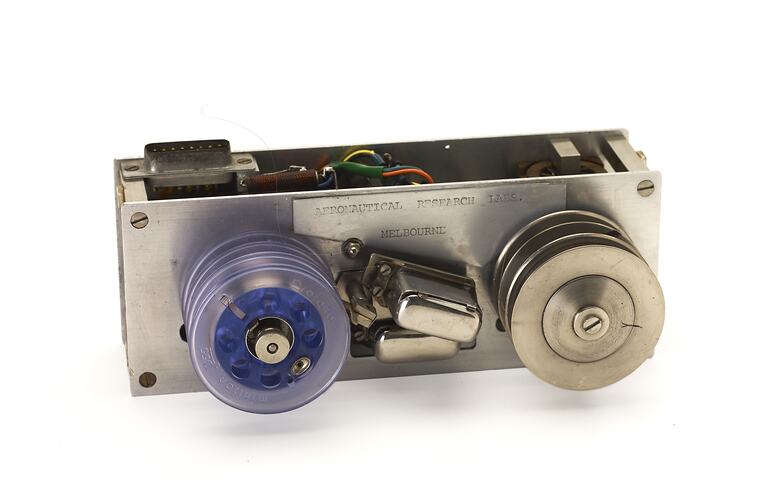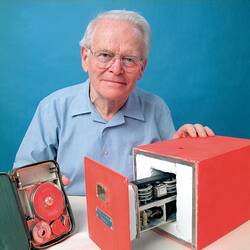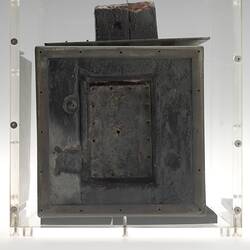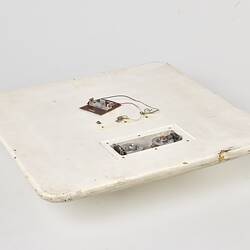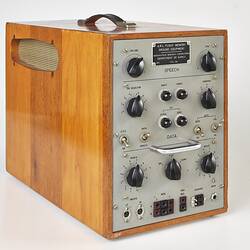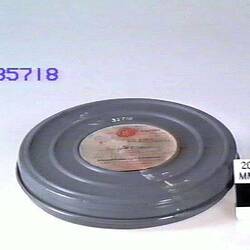The concept of a small wire recording device to capture aircraft flight data and cockpit voices to assist accident investigators came about as a result of the unexplained loss of several de Havilland Comet jet airliners in the early 1950s. Dr David Warren working in jet fuels research at the Aeronautical Research Laboratory (ARL) in Melbourne had seen an example of a Minifon, a small German-made pocket recorder using steel wire to record sound. Warren was convinced that the same type of device could be adapted to act as a 'flight memory recorder' and could have revealed the cause of the Comet crashes by collecting speech and data from the aircraft just prior to the accidents. The cause of the Comet crashes was eventually determined to be fuselage metal fatigue after extensive ground testing using water tanks to simulate cabin pressure cycles.
Warren's first attempt to have a prototype made by ARL were not taken seriously but a new manager, Tom Keeble encouraged Warren to write a technical memorandum in May 1954 which was circulated to organisations including the UK Ministry of Transport and the International Civil Aviation Organisation (ICAO). The unit was developed by the Flight Research group within the ARL Mechanical Engineering Division with assistance from the ARL Instruments Group and Mr T.N. ('Tych') Mirfield, a Melbourne-based freelance instrument maker, who was commissioned by the ARL to build the first working prototype. Using some components from two commerically purchased 'Minifon' wire recorders, Mirfield completed the Mk.1 cockpit voice and data recorder in early 1958. This was fire and impact tested with success and was demonstrated to aviation authorities by Dr Warren during a visit to the UK in July 1958. In October 1959 the 'ARL Flight Memory' unit as it was now known was displayed for the public on several Open Days at ARL, Fishermans Bend.
The crash of a TAA Fokker Friendship at Mackay, Queensland on 10 June 1960 and the deaths of all 29 passengers and crew led to a recommendation in December 1960 by the inquiry board chairman Mr Justice Spicer that "...satisfactory flight recorders can be installed at no distant date". An airworthy unit comprised of a signal monitor and recorder was flight tested for the first time on 23 March 1962 when Fokker Friendship VH-CAV flew from Essendon airport in Melbourne with excellent test results. Despite this success, Australian and international airlines and government bodies showed limited enthusiasm for the device although on 9 March 1961 it had been announced by the Minister of Civil Aviation that flight recorders would be mandatory in Australian passenger aircraft.
Interest in the UK was sufficient for the firm S. Davall & Sons to take up the manufacturing rights in late 1963. It was manufactured commercially by the firm and by 1968 had been fitted to aircraft belonging to 13 airlines. It is now compulsory for passenger aircraft to carry a voice and flight data recording device widely referred to as a 'black box', although ironically they are usually painted fluorescent orange to make the units easier to locate amongst crash site wreckage. ARL and Dr David Warren did not benefit financially from the invention which has been widely viewed as an example of the failure of Australian government and private enterprise to capitalise on local inventions of global significance.
More Information
-
Keywords
-
Localities
-
Authors
-
Article types
